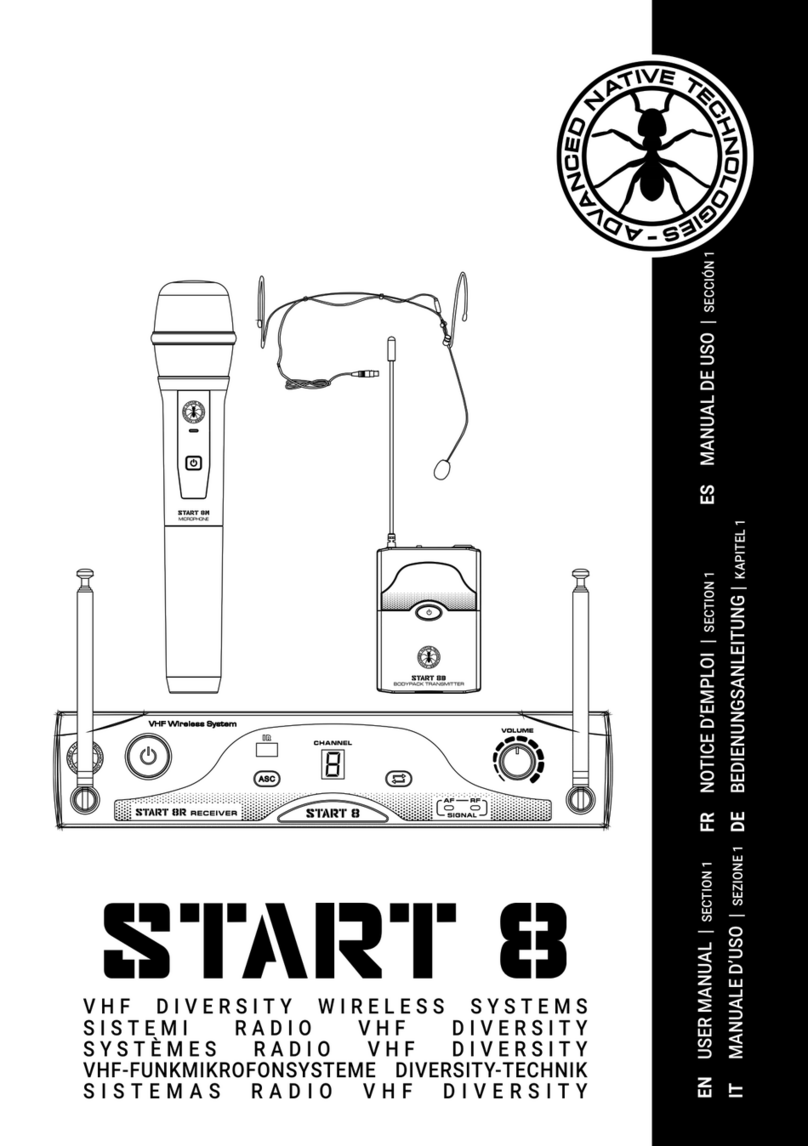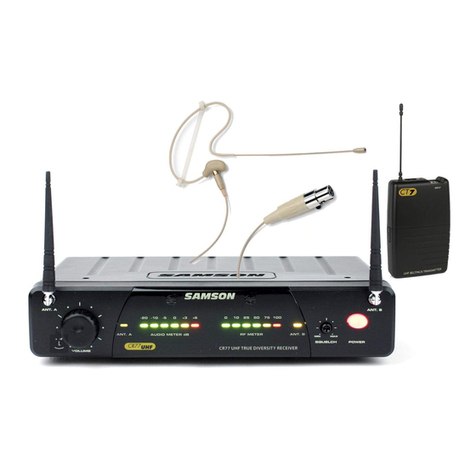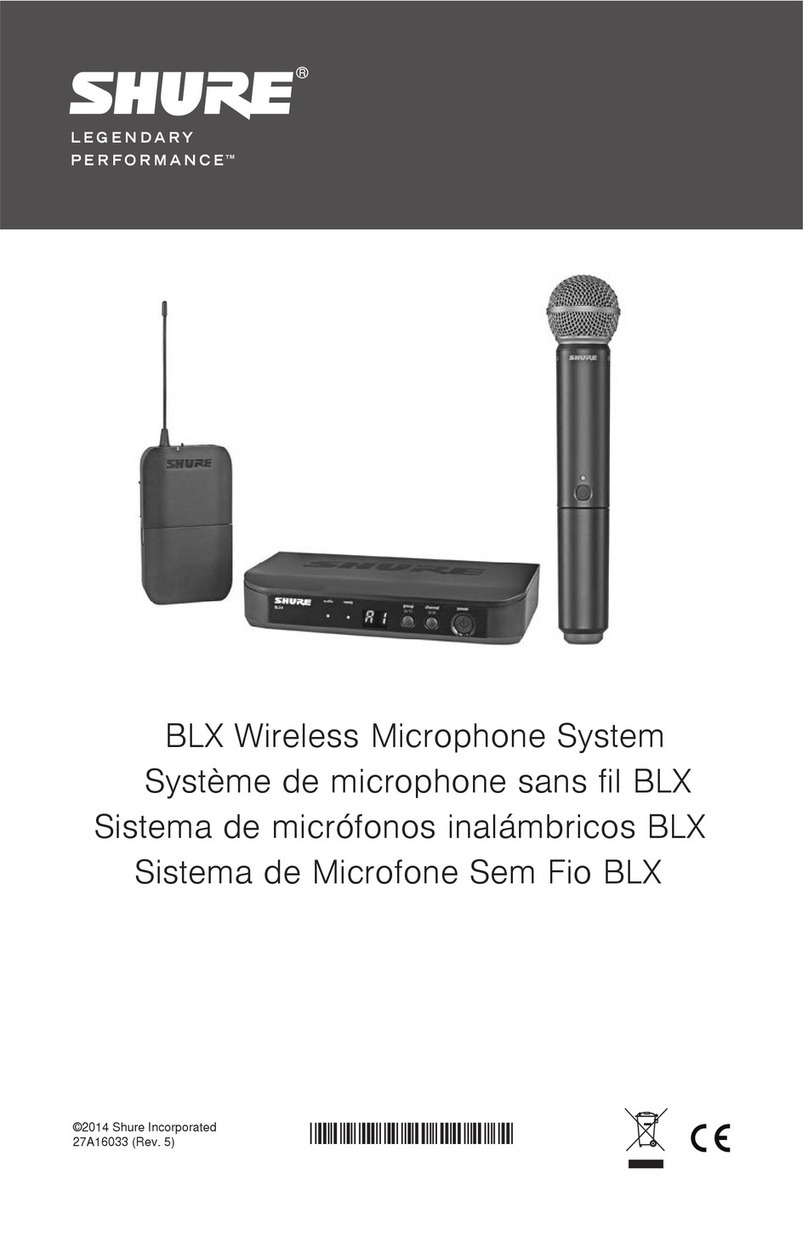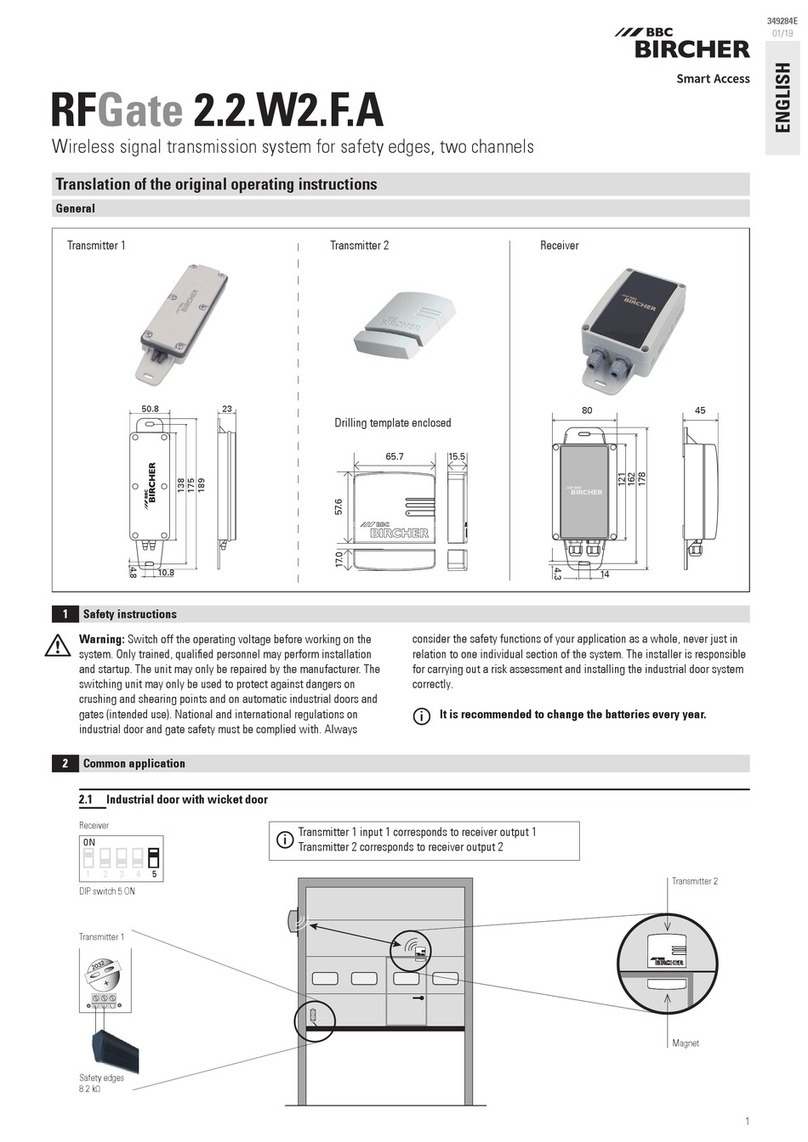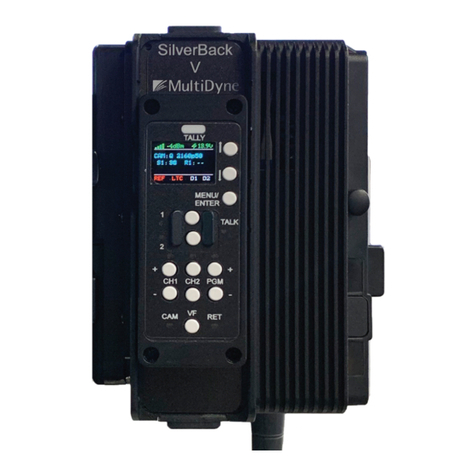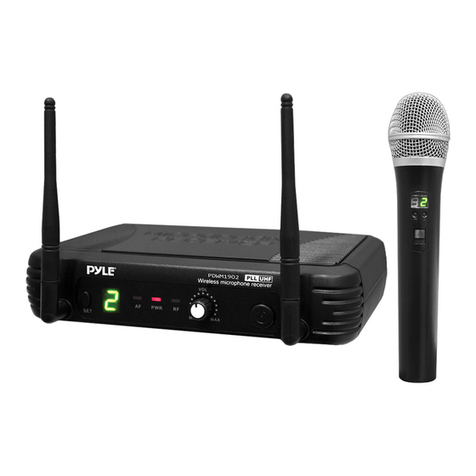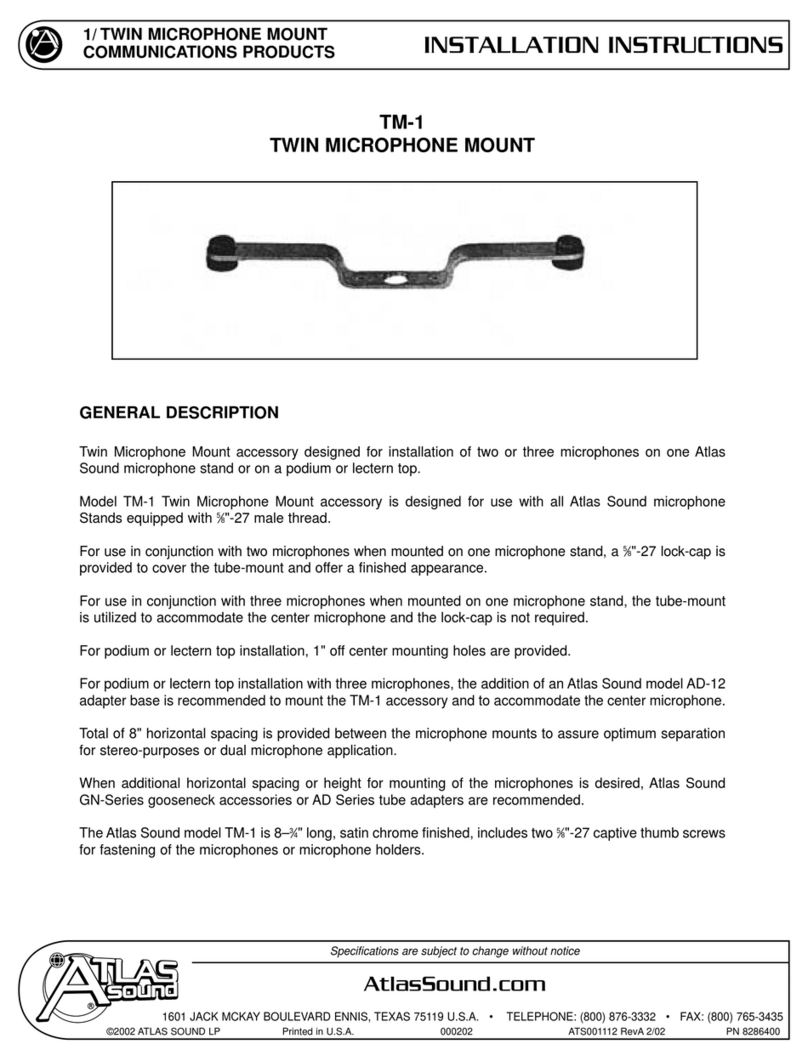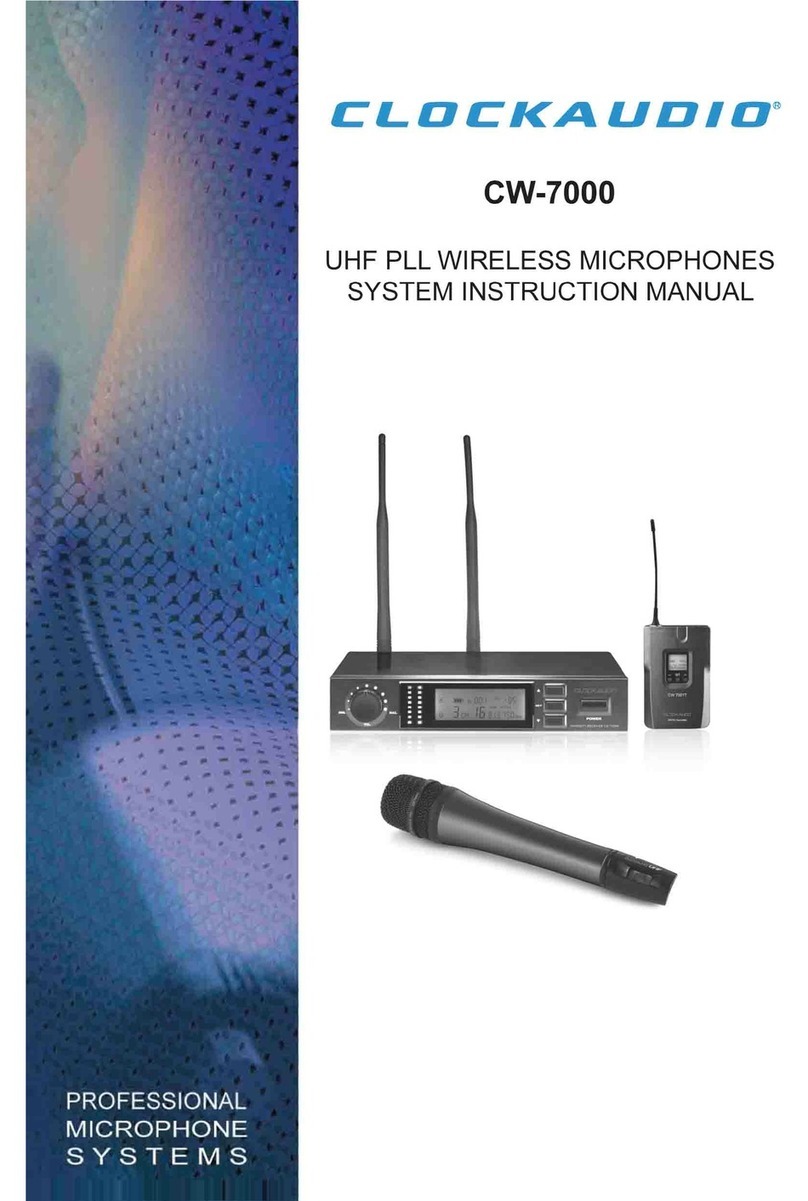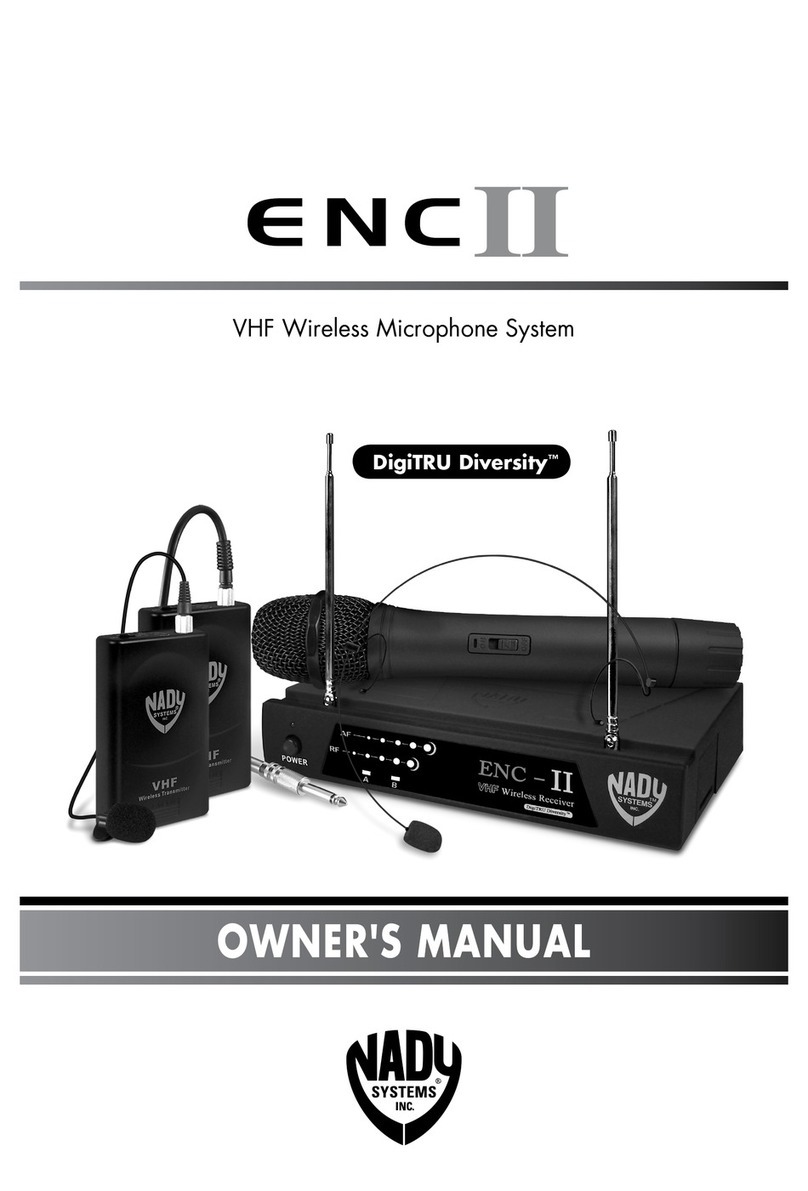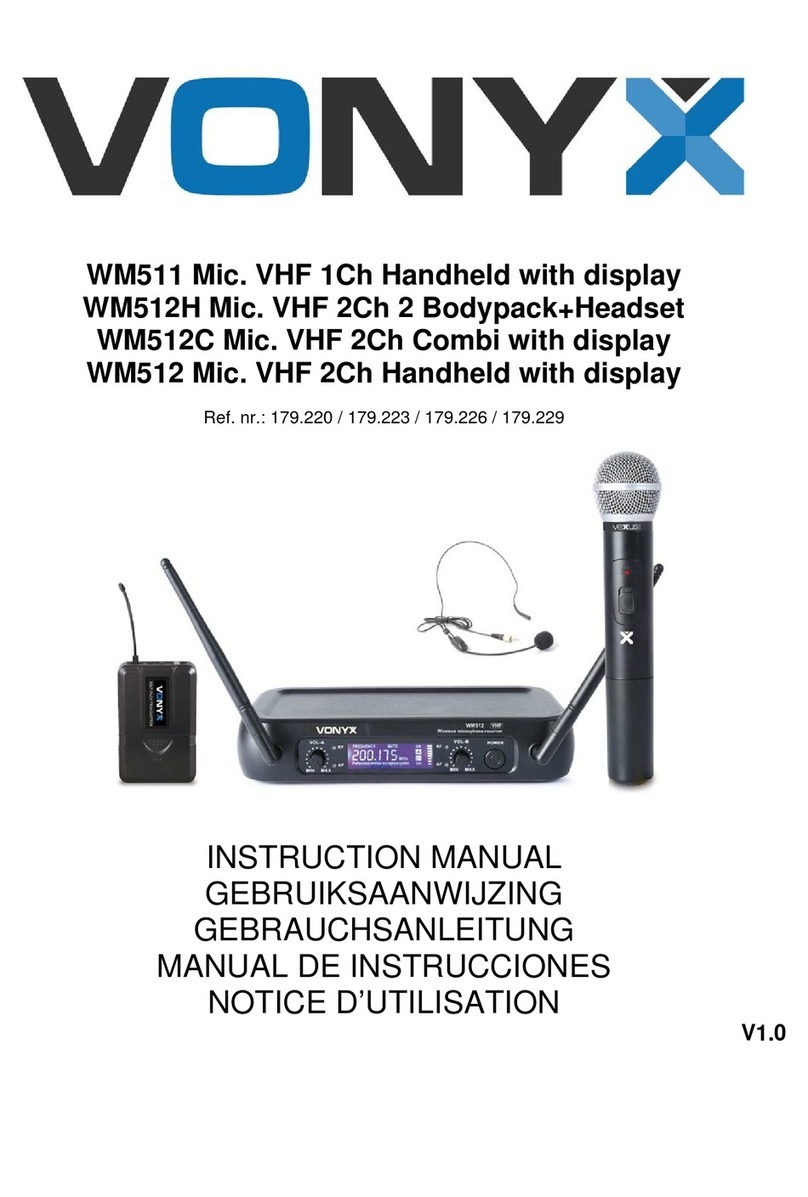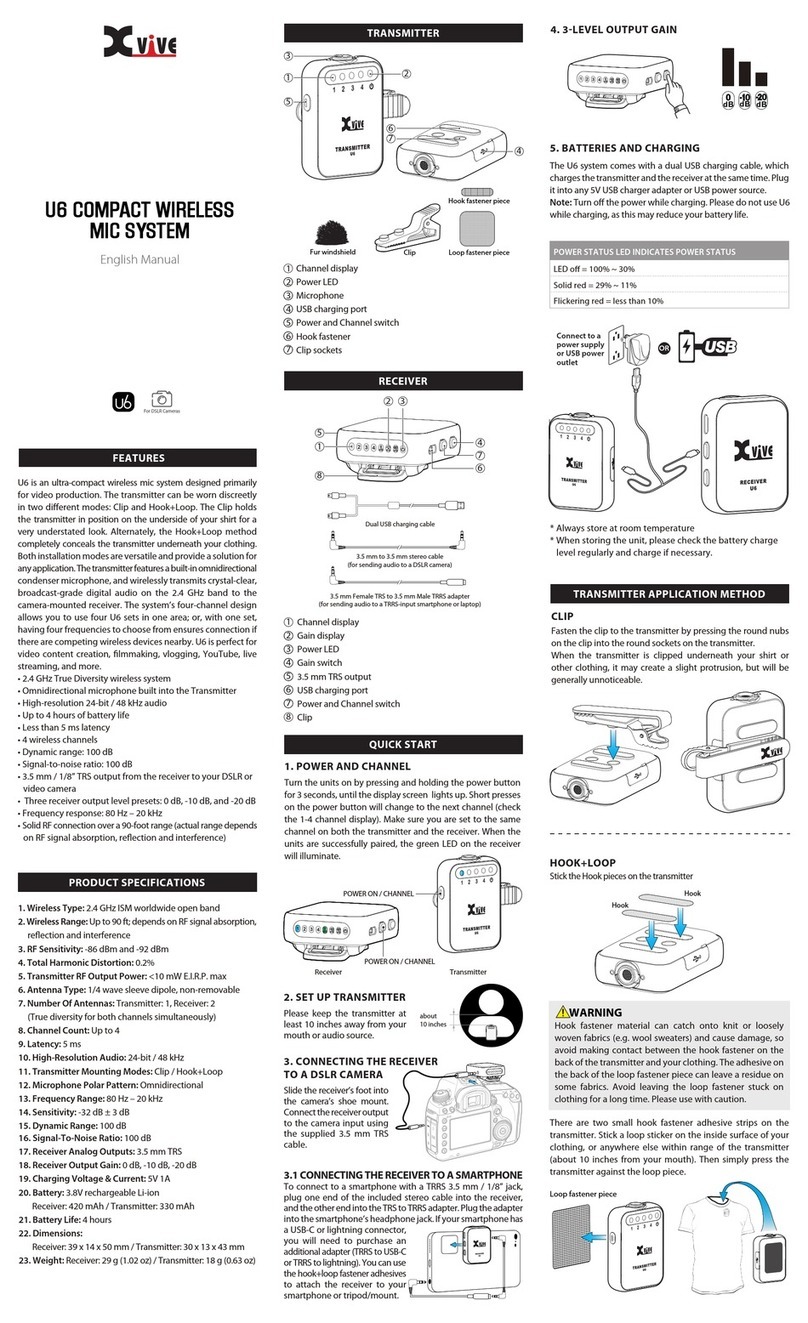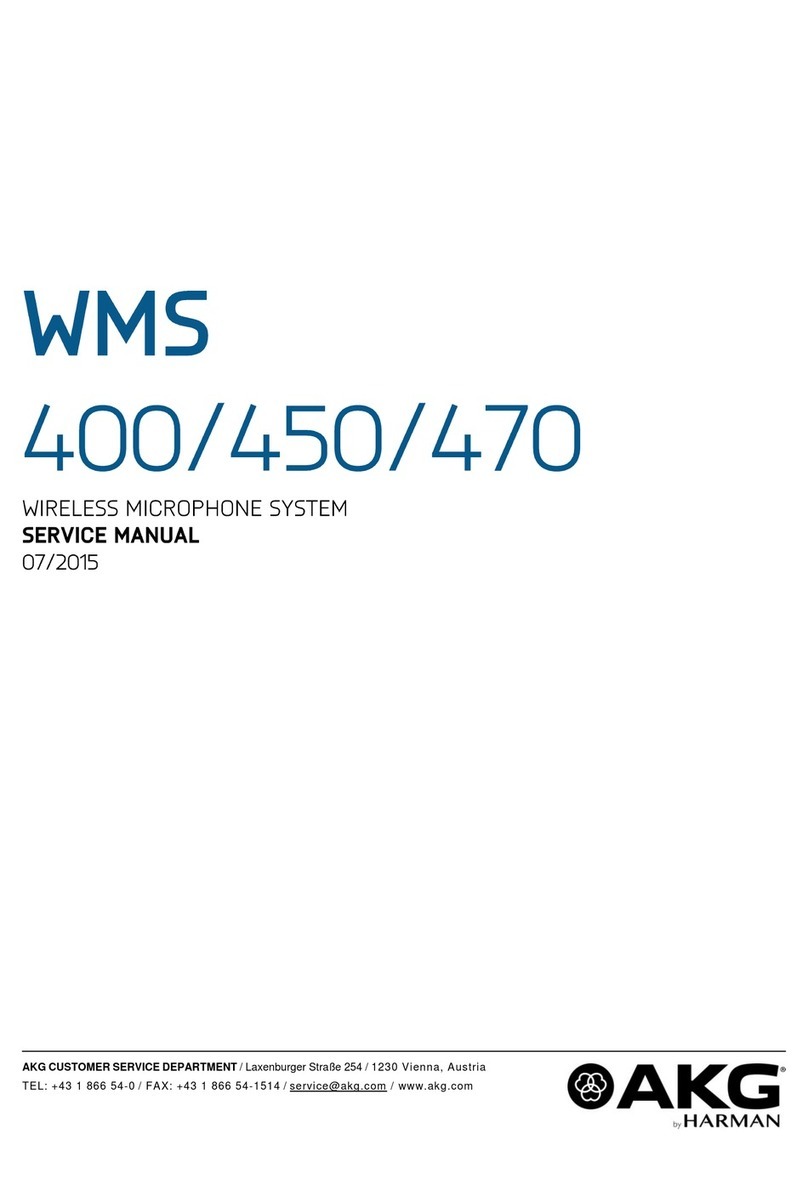Citronic MU16H User manual

16 Channel UHF Wireless Microphone System
(MU16H, MU26H, MU16N, MU26N)
User Manual
Features:
PLL digitally tuned UHF
Auto-mute on signal drop
High quality microphone capsule
19” rack-mountable (1/2 width)
IR tuning sync.
Operates using AA batteries

Introduction:
Thank you for choosing the Citronic 16 channel UHF-series wireless system. This professional wireless set provides a high quality microphone with a
tuneable PLL UHF radio system for ultimate wireless quality and versatility. Please read this manual before using this equipment in order to avoid damage
through incorrect operation and to get the best performance from your purchase.
Contents:
Please take care when unpacking this product. Inspect for any damage and ensure you have the following components…
UHF wireless receiver
Mains power adapter
6.3mm mono jack lead
2 x 1.5V AA battery (4 pieces for MU26H and MU26N)
Rack-mounting adapters
Microphone / transmitter(s) –see table below
Model
Stock code
Microphone 1
Microphone 2
MU16H
171.829
Handheld transmitter
-
MU26H
171.832
Handheld transmitter
Handheld transmitter
MU16N
171.830
Discreet neckband mic. + bodypack
-
MU26N
171.833
Discreet neckband mic. + bodypack
Discreet neckband mic. + bodypack
Warning:
To prevent the risk of fire or electric shock, do not expose any of the components to rain or moisture.
If liquids are spilled on any component, stop using immediately, allow unit to dry out and have checked by qualified personnel before further use.
Avoid impact or heavy vibration to any of the components, dropping the microphone can cause capsule failure.
No user serviceable parts inside transmitter or receiver - refer servicing to qualified service personnel.
Safety
Ensure that the correct adapter is used with adequate current rating and that the mains voltage is as stated on the adapter.
Avoid ingress of water or particles into the transmitter(s) or receiver
Use alkaline or NiMH batteries in the transmitter(s) and remove if unused for long periods.
Observe the correct polarity when replacing batteries
Placement
Keep all components out of direct sunlight and away from heat sources.
Do not place heavy objects on top of the receiver or transmitter(s)
If rack-mounting receivers in pairs, use the supplied rack ears and coupling brackets.
If rack-mounting individually, secure the receiver to a 1U rack tray and do not place heavy equipment above the receiver.
Keep the transmitter(s) and receiver away from damp or dusty environments.
Cleaning
Use a soft cloth with a neutral detergent to clean the body of the microphone/transmitter and receiver.
Lightly damp sterile wipes may be used on the microphone grille for hygiene purposes
To avoid damage, do not use solvents to clean the components
Handheld Transmitter Beltpack Transmitter
1. Windshield
2. Backlit LCD display
3. Slide switch –OFF/MUTE/ON
4. Battery compartment cover
1. UHF antenna
2. LED indicator
3. Sensitivity switch LINE-MIC
4. MIC input, threaded 3.5mm jack
5. Backlit LCD display
6. ON/check button
7. GAIN ADJUST rotary
8. Battery compartment

Receiver Rear Panel
Receiver Front Panel
Operation
For handheld transmitters, insert the supplied 2 x AA batteries by carefully unscrewing the base to reveal the battery compartment inside the
microphone body, slide the batteries into the compartment (note: negative towards top of microphone) one behind the other and replace the
compartment cover. To switch the transmitter on, move the slide switch to the first notch (MUTE) –the LCD backlight will illuminate –then move
on another notch and the microphone will be switched on, showing the frequency and battery status –the backlight will go out after a few
seconds.
For beltpacks, squeeze down the clip in the centre of the front panel of the beltpack to unfasten the lower half, which hinges outwards to reveal
the battery compartment. Position the supplied 2 x AA batteries inside (ensure + and - are the correct way round for each) and then close the
battery compartment flap until clipped back into position. If using a neckband or lavalier microphone, ensure that the sensitivity switch is set to
the “mic” setting (the alternative setting is for use with instruments via a jack lead and will be quieter). To activate the transmitter, press and hold
the ON / CHECK button (see diagram above) until the word “ON” is displayed – this is replaced by the frequency and battery status. The
backlight will go out after a few seconds, pressing the “ON / CHECK” button momentarily switches the backlight on briefly.
Position the receiver within the best available line of sight to the transmitter(s) and connect the DC jack of the supplied power adapter to the
receiver and the plug-top to the mains outlet. Turn microphone level(s) down on the receiver. Extend both antennae fully upwards and outwards
slightly and press and hold the POWER / IR SYNC. Button for more than 2 seconds –this will switch the unit on.
Note: for dual sets (with 2 transmitters), both microphones’ outputs will be mixed and fed to both balanced and unbalanced outputs.
Connect the jack or XLR (optional) lead to the receiver’s audio output connector, turn down the volume of any equipment (mixer, amplifier etc.)
that the signal will be fed into and then connect the jack or XLR to the equipment.
Warning! - take care not to point microphones towards speakers –this can cause damaging feedback (loud whistle or howling noise) –try to
point microphones away from the speaker cabinets.
1. Antennae (detachable BNC)
2. Power adapter input
3. Balanced XLR output
4. Unbalanced 6.3mm jack output
1. Power / IR Sync. button
2. Channel A volume control
3. Channel A frequency up/down
4. Backlit LCD display
5. IR sender
6. Channel B frequency up/down
7. Channel B volume control

Tuning
The receiver LCD display shows the channel number (2 separate channel numbers on dual receivers) and RF and AF level meters to indicate if
Radio Frequency (RF) carrier is being received and if Audio Frequency (AF) is being heard by the receiver.
To tune the transmitter(s) to the receiver, the receiver can send an Infra Red (IR) signal to the transmitter –this is called “IR Sync.”.To activate
this, select the desired channel using the Frequency Up/Down buttons (see diagram above) and the channel number selected will show on the
LCD display. Briefly press (do not hold) the “POWER / IR SYNC” button on the receiver and the frequency value will flash on the LCD display.
For handheld units, hold the transmitter with the IR sensor (either on the end or rear of the microphone body) near to the IR sender on the UHF
receiver unit (see diagram above). The display on the handheld unit will flash until both transmitter and receiver frequencies are matched and
channel numbers stop flashing.
For beltpack units, open the battery compartment to reveal the IR sensor inside and hold this near to the IR sender on the UHF receiver. The
display on the beltpack unit will flash until both transmitter and receiver frequencies are matched and channel numbers stop flashing.
In use
Gradually increase the microphone level(s) on the receiver and then increase the volume on the mixer or amplifier until the sound from the
microphone can be heard through the equipment.
During use, it may be useful for the reception of the microphone to be muted for a short period of time (e.g. to avoid feedback when walking
across the front of a speaker or avoid handling noise when placing the microphone down momentarily or adjusting a neckband microphone). In
these circumstances, it may be better to move the transmitter switch to the “MUTE” position, which maintains the radio frequency carrier signal
but mutes the microphone input. When this switch is moved back to the “ON” position, the sound will be immediately restored.
If the wireless system is not to be used for more than a few seconds, it is preferable to slide the transmitter switch to the “OFF” position, which
mutes and deactivates the radio signal and powers down the transmitter. For beltpacks, hold the “ON / CHECK” button until the word “OFF” is
displayed and release to power down. Be sure to turn down the volume of the mixer or amplifier and then switch off the receiver.
Unplug signal leads from the receiver and mixer or amplifier when moving or packing away. If the system is not to be used for long periods of
time, remove the batteries from the transmitter and unplug the power adapter from the receiver and the mains outlet. Retracting and/or removing
the antennae can also help avoid damage when the system is not in use.
SPECIFICATIONS
Carrier type
UHF 863 - 865MHz (digital PLL tuning)
RF carrier stability
10PPM
Sensitivity
-105dB
Audio frequency response
40Hz –20kHz
Signal to noise ratio
>105dB
Audio dynamic range
>80dB
T.H.D.
<0.5% @ 1kHz
Maximum range
50m
Operating temperature
-10ºC to +50ºC
RECEIVER
Power supply
12 - 18Vdc 500mA (mains adapter supplied)
Audio outputs
XLR (balanced), Jack (unbalanced)
Controls
Power / IR SYNC, Channel volume(s), Frequency up/down
Indicators
Backlit LCD with Channel, RF and AF levels
Dimensions
45 x 200 x 175mm
Weight
905g
HANDHELD TRANSMITTER (MU16H, MU26H)
Battery
3Vdc (2 x AA)
Switch
Power / Mute / On
RF emission
<10mW
Capsule type
Dynamic –hyper-cardioid response
Dimensions
255 x 50mmØ
Weight (without battery)
345g
BELTPACK TRANSMITTER (MU16N, MU26N)
Battery
3Vdc (2 x AA)
Switch
Power / Mute / On
Connector
3.5mm mono jack - threaded
Compatible microphones
171.855, 171.856, 171.857
RF emission
<10mW
Dimensions (not inc. antenna)
110 x 68 x 25mm
Weight (without battery)
90g
NECKBAND MICROPHONE (MU16N, MU26N)
Capsule type
Condenser - cardioid response
Power supply
3V phantom from beltpack
Connector
3.5mm mono jack - threaded
Dimensions
140 x 180 x 60mm
Weight
16g

FREQUENCY CHART
Channel
Frequency (MHz)
Channel
Frequency (MHz)
1
863.35
9
864.25
2
863.45
10
864.35
3
863.55
11
864.45
4
863.65
12
864.55
5
863.75
13
864.65
6
863.85
14
864.75
7
863.95
15
864.85
8
864.15
16
864.95
Troubleshooting
No backlight on UHF receiver display
Ensure power adapter is connected to mains and working properly
Ensure receiver is powered on
Receiver display is lit but no level on “RF” or “AF” meters
Ensure transmitter is switched on
Check that transmitter is not out of reception range
Try IR frequency sync-ing to ensure frequency of transmitter is same as receiver
Check that transmitter batteries are good / charged
“ “RF” meter is showing good level but no “AF” and no sound
Check if transmitter switch is in “MUTE” position
Check if neckband or lavalier microphone is connected to beltpack
Ensure transmitter has good / charged batteries
Check if there is another nearby transmitter with the same frequency –if so, switch frequencies
“RF” and “AF” meters showing good levels but no sound
Make sure receiver is connected to mixer / amplifier
Make sure that receiver and amplifier / mixer channel volumes are turned up
Cannot Sync frequencies via IR SYNC.
Place IR Sensor closer to IR Sender
Make sure the correct channel frequency value is flashing on UHF receiver unit
Microphone output is very loud or distorted
Turn down GAIN ADJUST on beltpack transmitter
Turn down VOLUME on receiver
Reduce Gain on mixer / amplifier
Ensure that XLR output is not fed to a Line input
Microphone output is very low
Turn up GAIN ADJUST on beltpack transmitter
Turn up VOLUME on receiver
Increase Gain on mixer / amplifier
Ensure that Jack output is not fed to a Mic input
Ensure that Sensitivity switch is not set to Instrument level
Check transmitter batteries
Note: for further troubleshooting, refer equipment to qualified service personnel for testing
© Citronic 2011
This manual suits for next models
3
Table of contents
Other Citronic Microphone System manuals
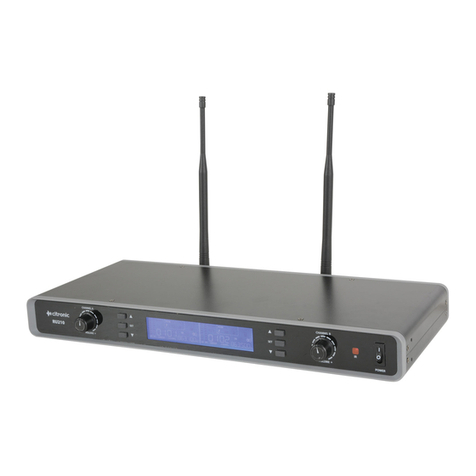
Citronic
Citronic ru210 User manual

Citronic
Citronic LM58-T User manual
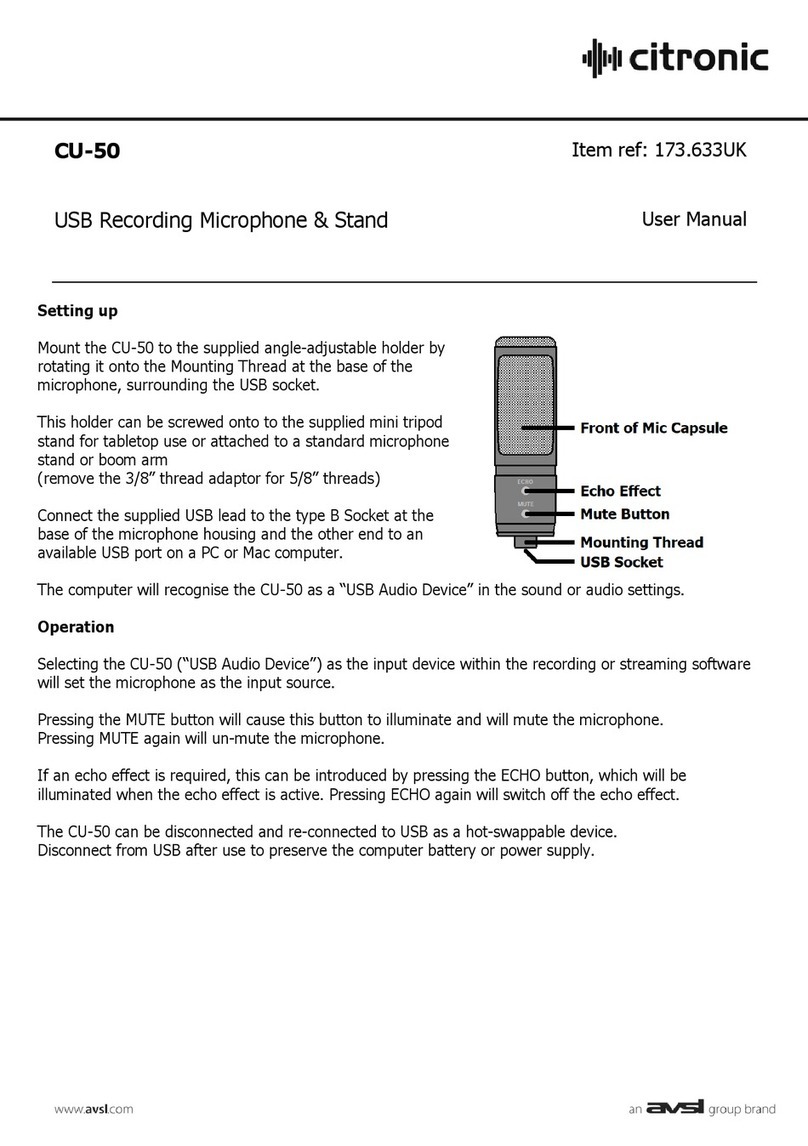
Citronic
Citronic CU-50 User manual

Citronic
Citronic RU26H User manual
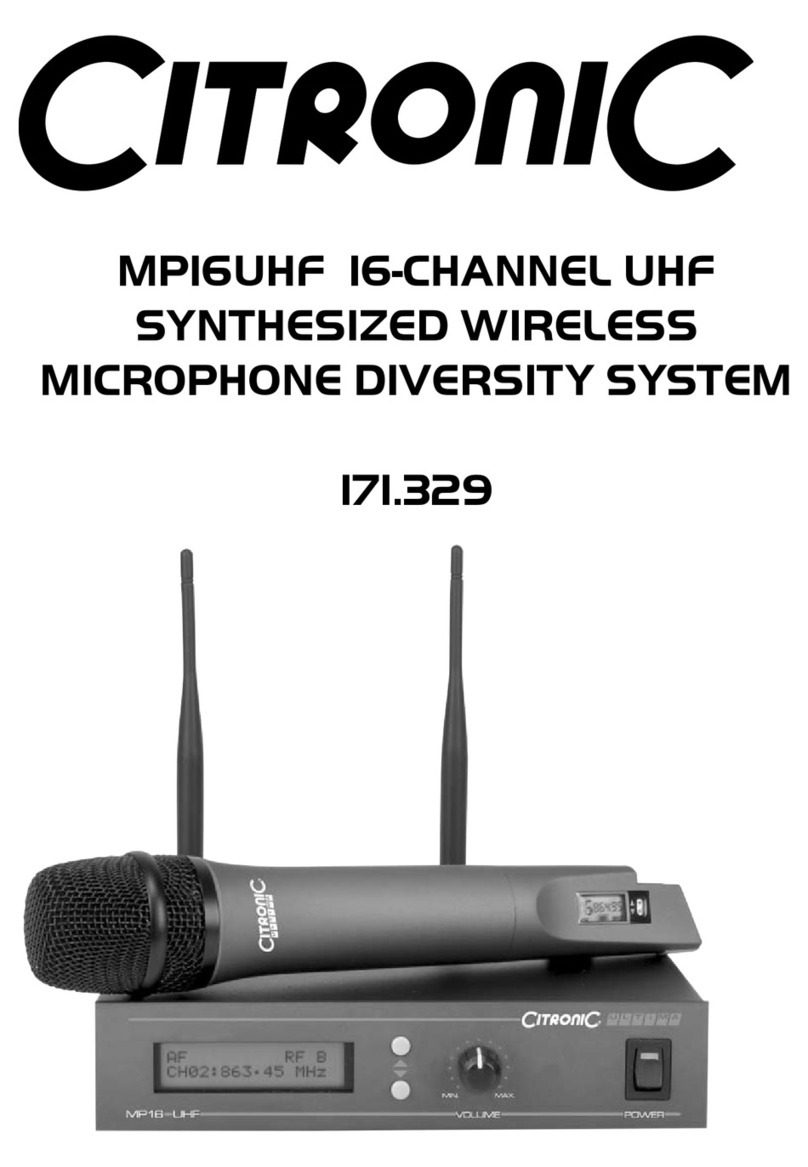
Citronic
Citronic MP16UHF User manual
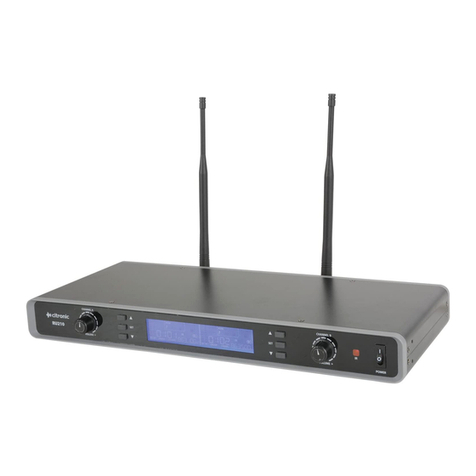
Citronic
Citronic 171.970UK User manual
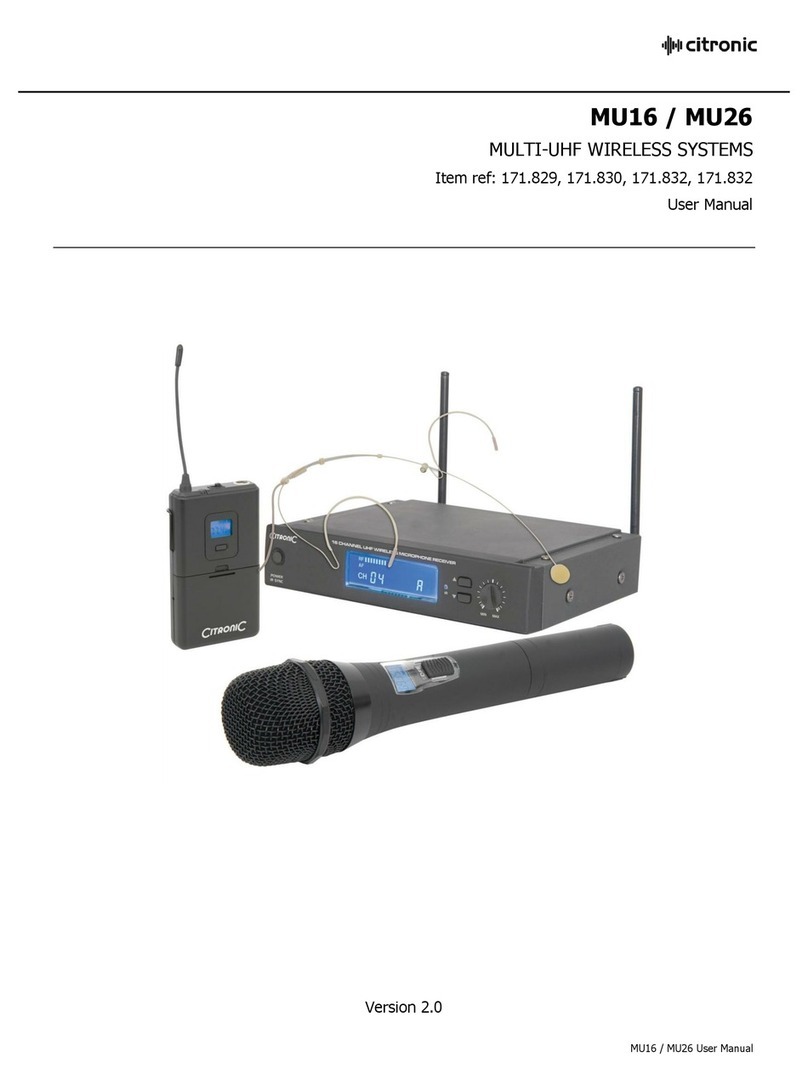
Citronic
Citronic MU16 User manual
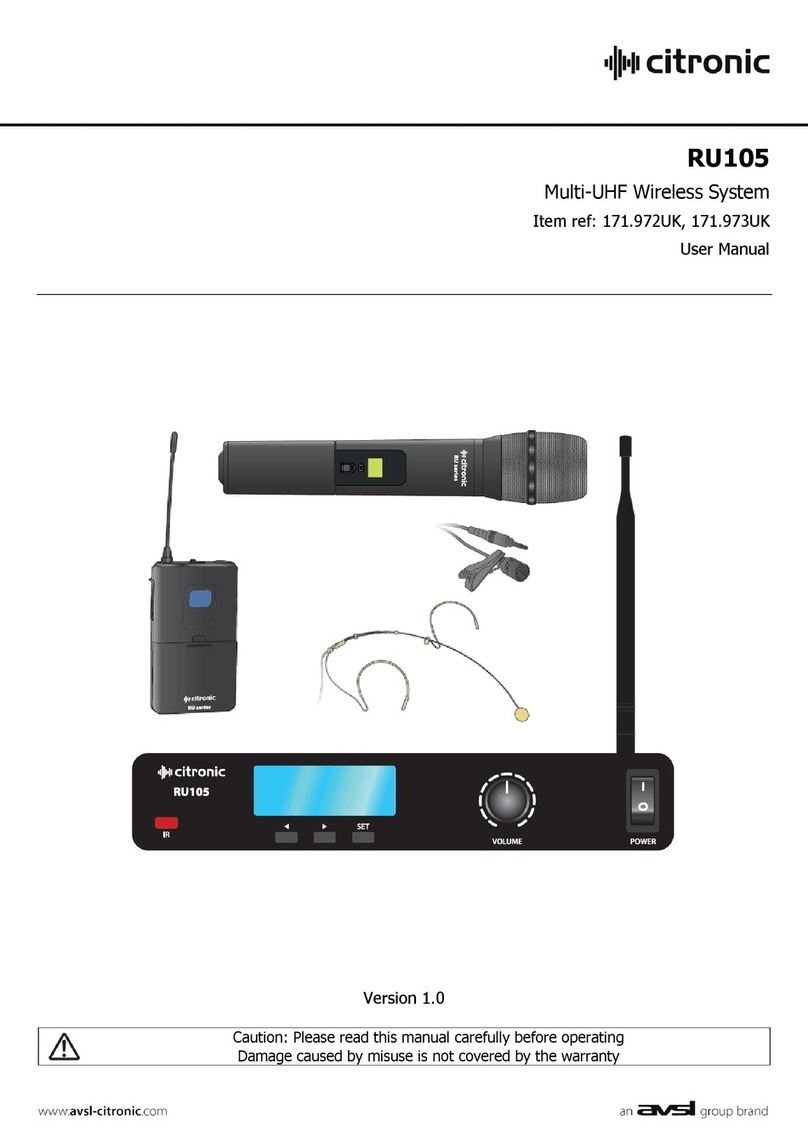
Citronic
Citronic 171.972UK User manual

Citronic
Citronic RU105 User manual
